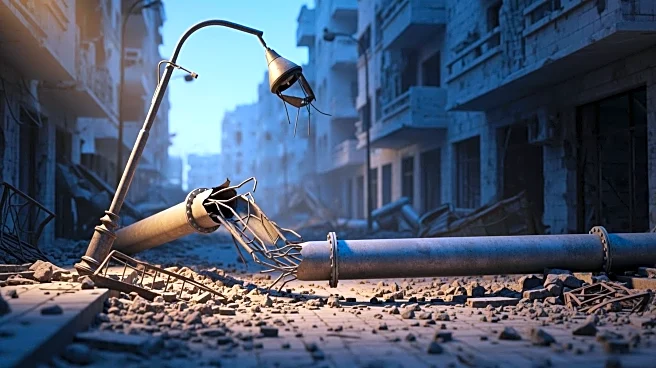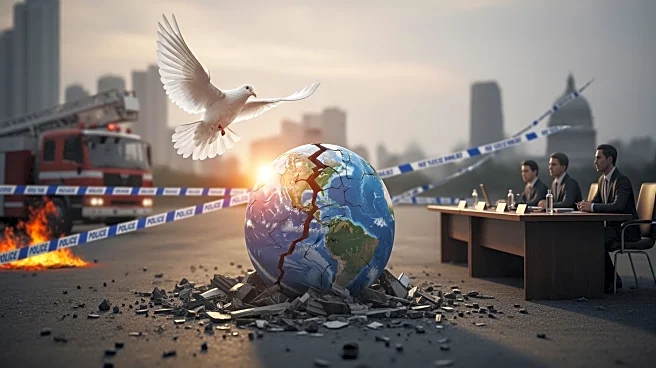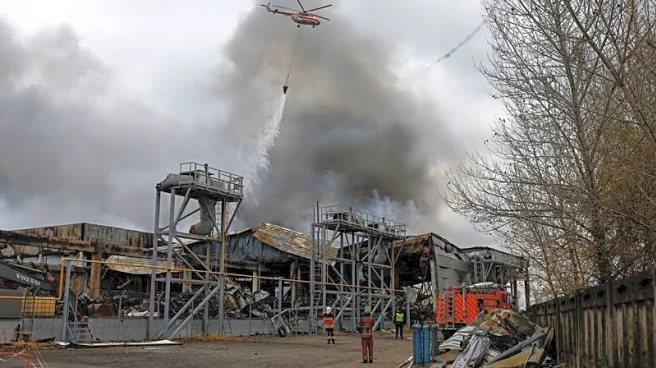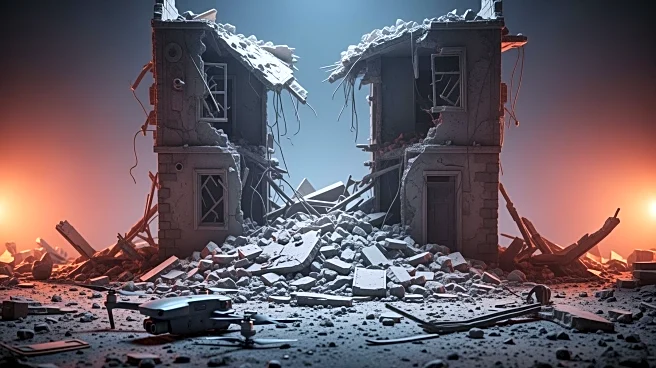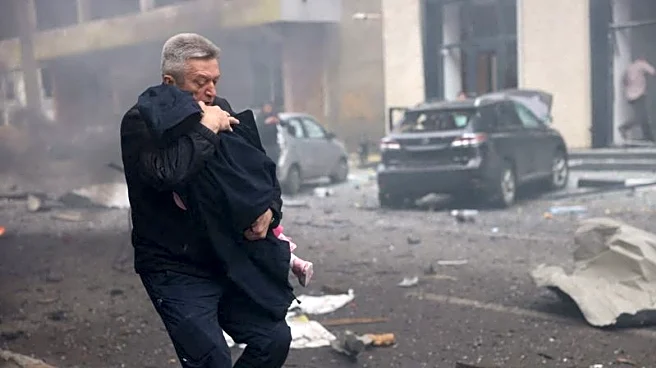What's Happening?
Recent Russian military actions have resulted in significant civilian casualties and damage to infrastructure across Ukraine. Over the past day, at least eight civilians were killed and 67 others injured
due to Russian attacks targeting multiple regions. The strikes have focused on civilian areas and critical infrastructure, including energy facilities, as part of Russia's ongoing strategy to pressure Ukraine. In Kherson Oblast, three people were killed and 29 injured, including children, due to glide bomb, artillery, and drone attacks. Kyiv also suffered a ballistic missile attack, resulting in two deaths and 12 injuries. The attacks have left thousands without power, particularly in Kharkiv Oblast, where energy infrastructure was targeted.
Why It's Important?
The escalation of Russian attacks on Ukraine's energy infrastructure comes at a critical time as colder weather increases energy demand, exacerbating the strain on the country's power systems. These actions not only result in immediate human casualties but also aim to destabilize Ukraine by disrupting essential services. The international community, including the U.S., is closely monitoring these developments, as they have broader implications for regional stability and global energy markets. The attacks highlight the ongoing humanitarian crisis and the need for international diplomatic efforts to address the conflict.
What's Next?
As the conflict continues, Ukraine is likely to seek further international support to bolster its defense capabilities and energy infrastructure resilience. The international community may respond with increased sanctions on Russia and additional military aid to Ukraine. Diplomatic efforts may intensify to negotiate a ceasefire, although Russia's current strategy suggests a reluctance to engage in peace talks. The situation remains fluid, with potential for further escalation or diplomatic breakthroughs.
